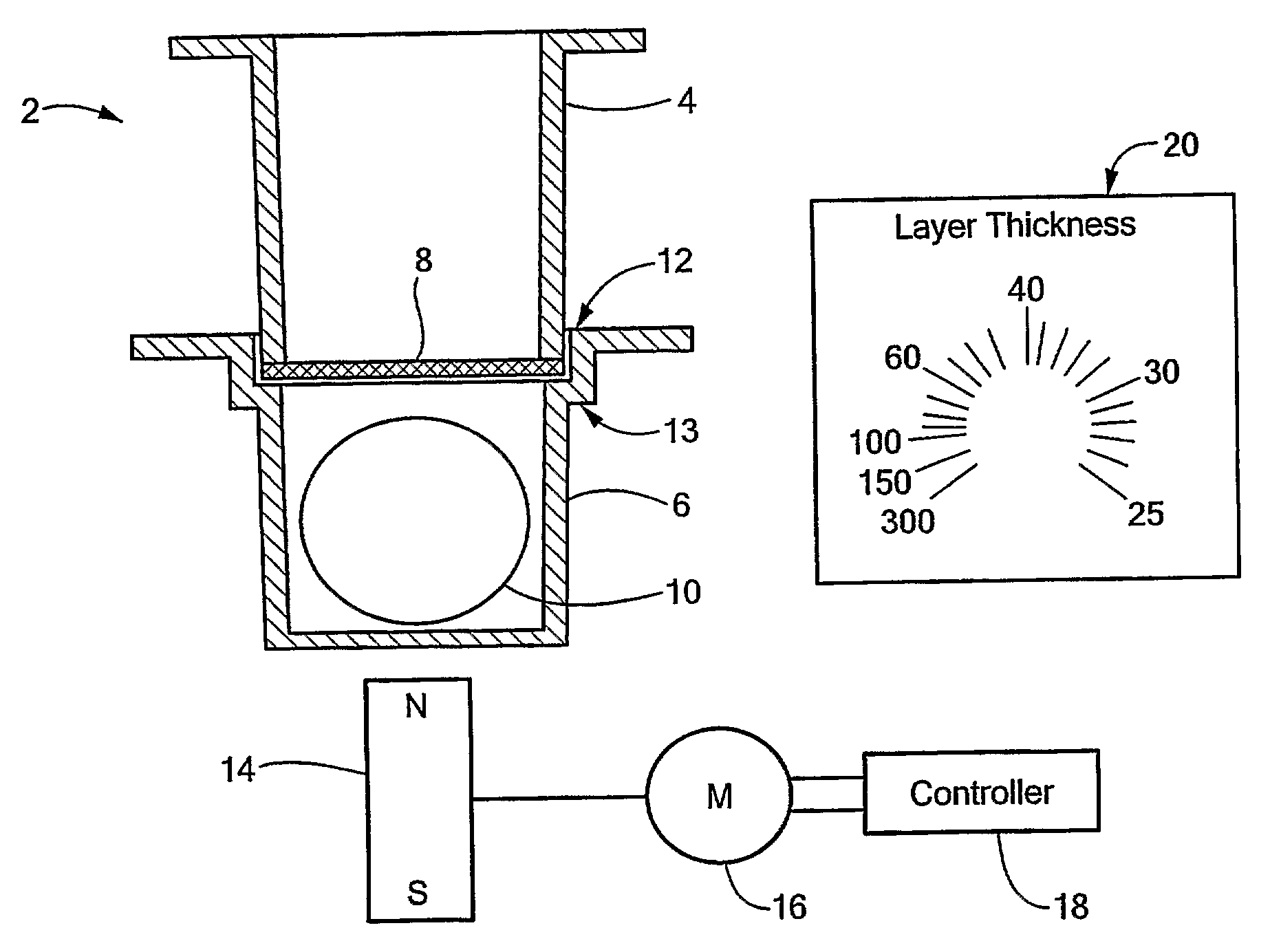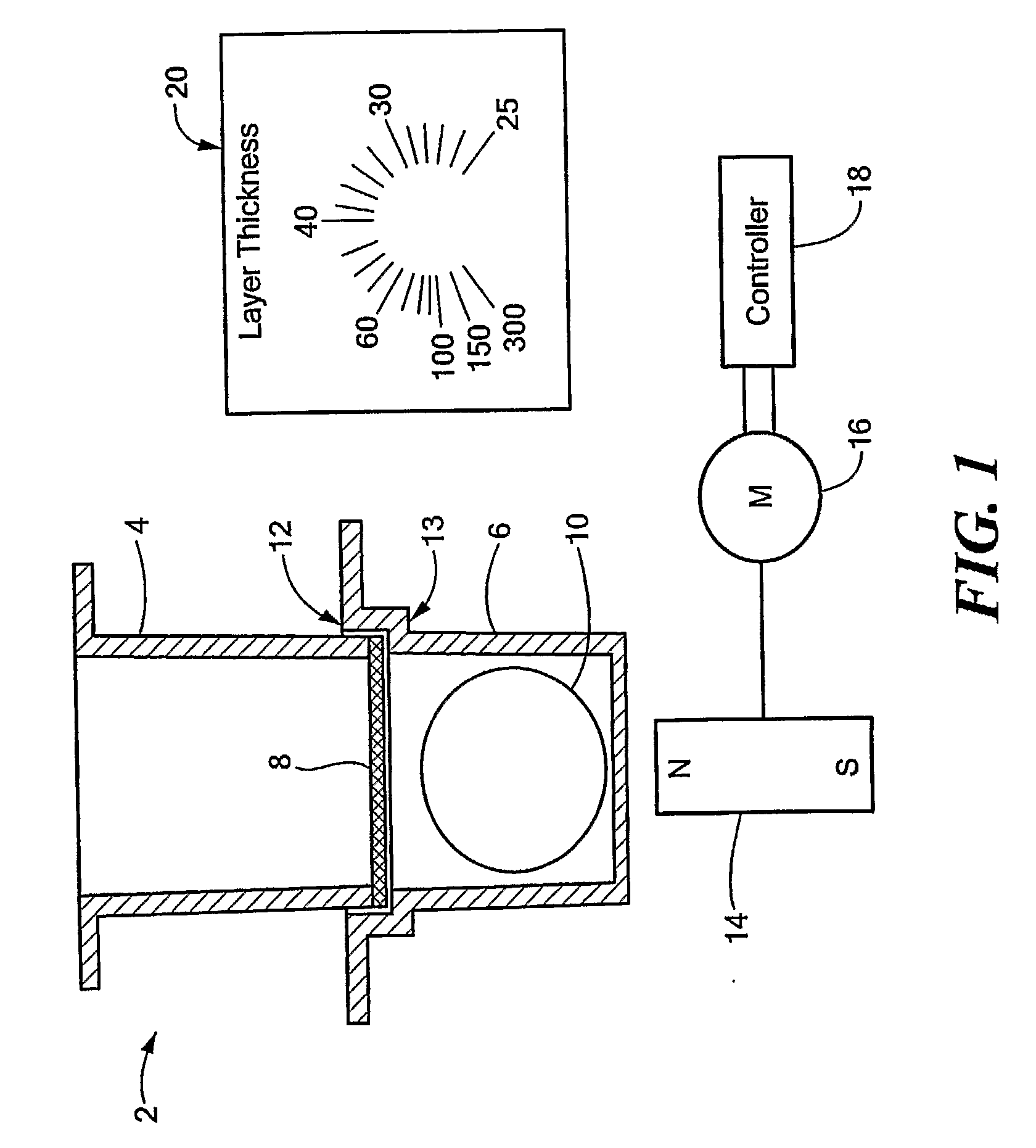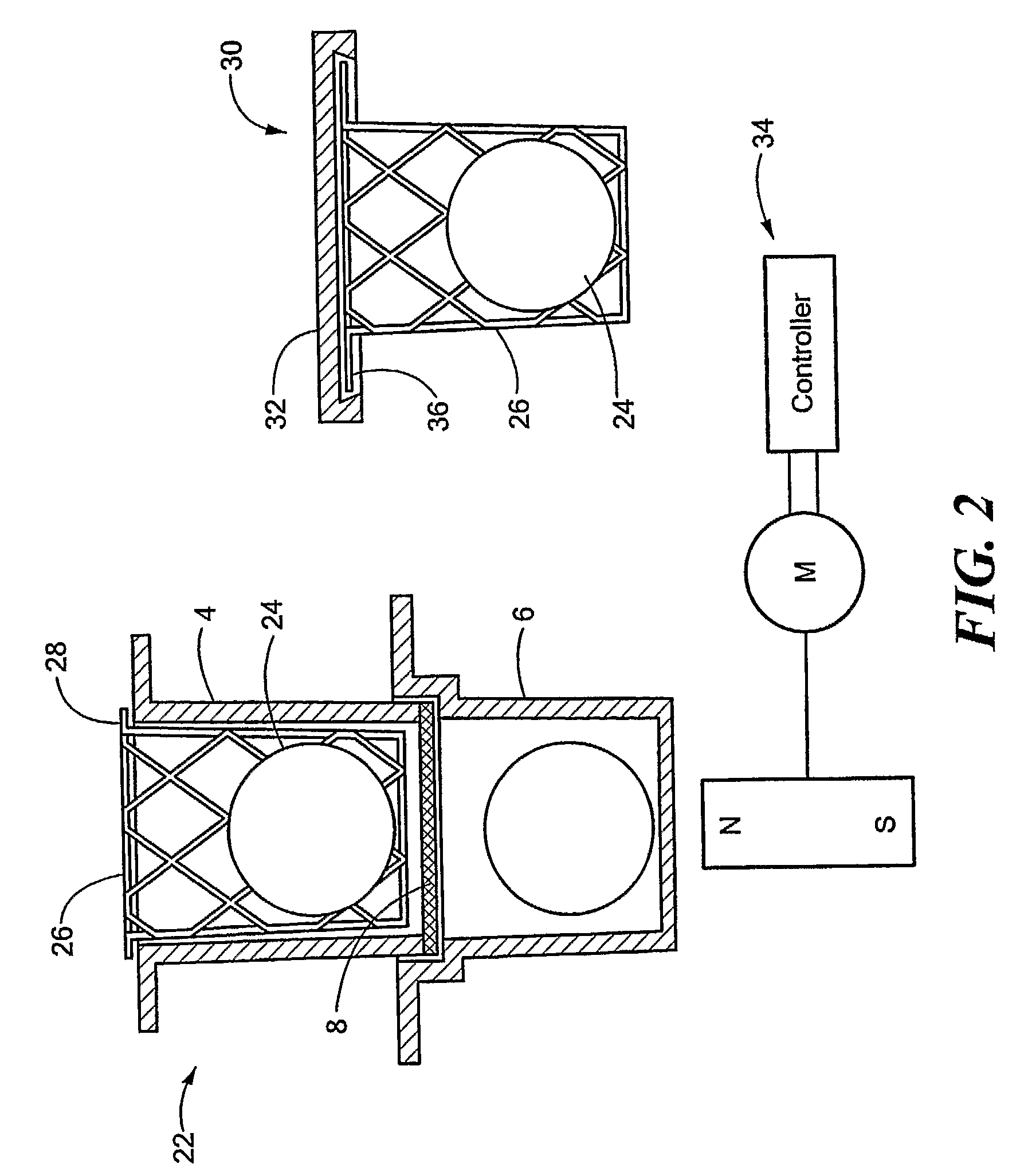Permeation Device and Method for Reducing Aqueous Boundary Layer Thicknesses
a technology of aqueous boundary layer and a permeation device, which is applied in the field of permeation device and method for reducing aqueous boundary layer thickness, can solve the problems of introducing significant errors in permeation measurement, approaches are still unable to reduce boundary layer thicknesses below 300 to 500 m, approaches become even less attractive for donor and acceptor compartments incorporated into microtitre plates, etc., to achieve the effect of reducing boundary layer thicknesses
- Summary
- Abstract
- Description
- Claims
- Application Information
AI Technical Summary
Benefits of technology
Problems solved by technology
Method used
Image
Examples
example
[0078] Fifty five different molecular entities were used for the present example. These entities included 2-naphthoic acid, 4′N-Et-3′-Me-ciprofloxacin, 4′N-Et-3′-Et-ciprofloxacin, astemizole, 4′N—Pr-3′-Me-ciprofloxacin, acebutolol, amlodipine-maleate, antipyrine, 3-hydroxyphenylacetic acid, ergonovine, benzoic acid, diltiazem-hydrochloric acid (HCl), desipramine-HCl, phenazopyridine-HCl, diclofenac-sodium (Na), flurbiprofen, fluvoxamine, ibuprofen, imipramine-HCl, ketoprofen, lansoprazole, protriptyline-HCl, naproxen, nortriptyline-HCl, warfarin, nalidixic acid, naringenin, nicardipine, ondansetron, oxprenolol, phenytoin-Na, pindolol, propranolol-HCl, piroxicam, prazosin-HCl, probenecid, progesterone, quinine-HCl, salicylic acid, tiamdipine, timolol-maleate, zimelidine, tamoxifen1, terfenadine1, amiodarone-HCl1, miconazole-nitrate1, itraconazole1, alprenolol-HCl2, chlorpromazine-HCl2, gemfibrozil2, indomethacin2, primaquine-diphosphate2, verapamil-HCl2, metoprolol-tartrate2 and prom...
PUM
| Property | Measurement | Unit |
|---|---|---|
| thickness | aaaaa | aaaaa |
| thickness | aaaaa | aaaaa |
| thickness | aaaaa | aaaaa |
Abstract
Description
Claims
Application Information
 Login to View More
Login to View More - R&D
- Intellectual Property
- Life Sciences
- Materials
- Tech Scout
- Unparalleled Data Quality
- Higher Quality Content
- 60% Fewer Hallucinations
Browse by: Latest US Patents, China's latest patents, Technical Efficacy Thesaurus, Application Domain, Technology Topic, Popular Technical Reports.
© 2025 PatSnap. All rights reserved.Legal|Privacy policy|Modern Slavery Act Transparency Statement|Sitemap|About US| Contact US: help@patsnap.com



